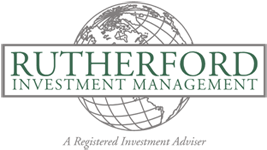Published March 9, 2018

Following a robust start to the new year, the markets descended into correction territory. What ensued was a period of confusion, because of the aftershock of the correction and because a new Federal Reserve chairman added to uncertainty. The market then seemed to regain its footing, recovering most of its loss. But after testimony of the new Fed chairman before Congress, the markets swooned again.
Then President Trump announced stiff tariffs on aluminum and steel imports, sending the markets down. The Dow Jones lost a total of about 1,000 points in two days and remains off of its highs.
Earnings still appear to be strong, with profits from S&P 500 stocks forecast to be up more than 16 percent in the first quarter of 2018. The rest of the year should be as strong or stronger, with the third quarter expected to see profits up almost 23 percent year over year.
Inflation remains rather tame – still under 2 percent. Indeed inflation has been moving into lower territory since 1980 due to improvements in the global supply chain and technological advances. Despite increased automation in all sectors, the unemployment rate has declined. Wages, which had remained stagnant, have just begun to move upward. The global economy remains strong, so we can expect the U.S. economy to also remain strong.
The Fed’s favorite inflation gauge, the core personal consumption expenditure index, has not exceeded 2.5 percent in years and was 1.5 percent at the end of 2017. You might think that the new Apple iPhone X could change the inflation outlook with its starting price of $1,000, but the U.S. Labor Department adjusts price changes to account for technological advances and said that equipment costs fell 2.56 percent in 2017 from a year earlier. So, inflation, the Federal Reserve’s main concern, remains in check … for now. But the market and the Fed expect three or four interest rate increases in this calendar year.
The administration wants to pour gas on the fire with generous (to some) tax cuts and vast deficit spending. Either would be most unusual in the later stages of a maturing economy; together they are unheard of. This tactic has never before been tried, so the outcome is uncertain.
In addition, increased tariffs on aluminum and steel would equate to a new tax on consumers and manufacturers. According to the administration, the new tariffs would protect the jobs of 350 beer can makers in Kentucky. It seems unlikely the future of the U.S. economy lies in aluminum cans or that they would add to the defense of the U.S., but unilateral tariffs would almost certainly lead to retaliation.
Tariffs have been used over the years to protect domestic industries. The results have been almost uniformly bad. This time will not be different. Don’t forget the Smoot-Hawley tariff was the first round of the Great Depression. For months I have written about the dangers of policy accidents, and this may be the biggest.
In an editorial, the Wall Street Journal called Trump’s tariff increases folly. An industry trade group called the Beer Institute said the proposed tariff amounts to a $347 million tax increase on consumers and would cost more than 20,000 workers their jobs. Other manufacturers of aluminum and steel products can also expect higher prices and workforce reductions. Gary Cohn, President Trump’s top economic adviser, has resigned his post over the tariff decision, causing further turmoil.
Still, the economy for now is ignoring policy blunders and continuing to churn out profits. May it be ever thus. I advise remaining invested in the best sectors and companies, with an eye on less volatile stocks. With rising interest rates, fixed income is not a good option and cash returns almost nothing. International markets have been under pressure, so as long as there are good opportunities in the U.S., I recommend staying home.
William Rutherford is the founder and portfolio manager of Portland-based Rutherford Investment Management. Contact him at 888-755-6546 or wrutherford@rutherfordinvestment.com. Information herein is from sources believed to be reliable, but accuracy and completeness cannot be guaranteed. Investment involves risk and may result in losses.
